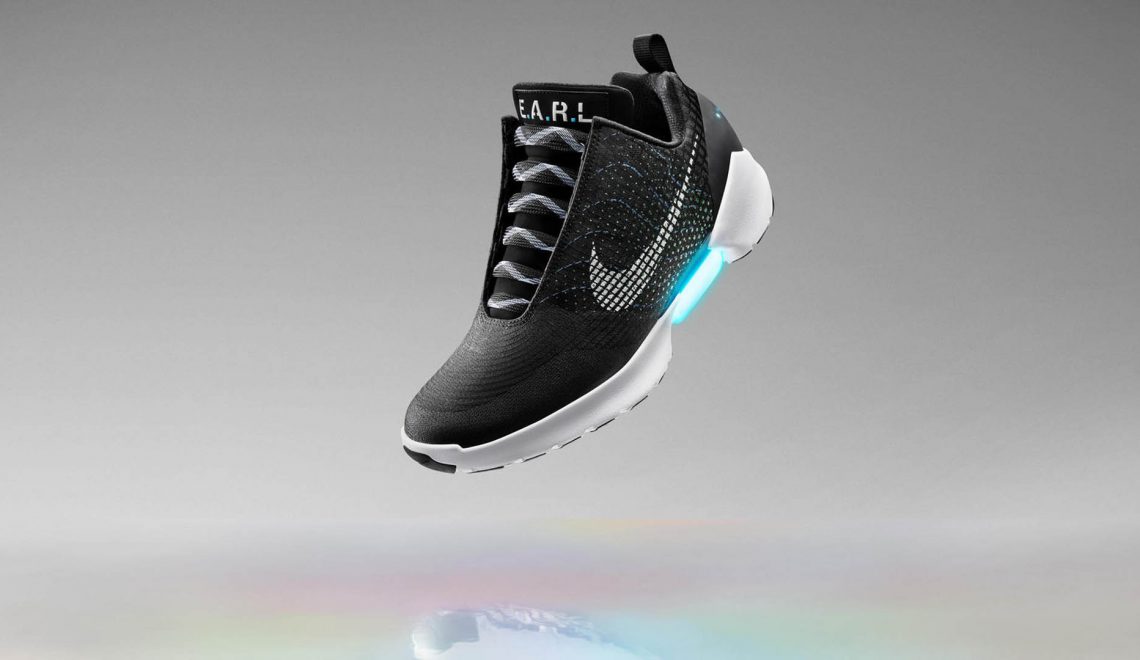In less than 2 days the first medals will be handed out at the 2016 Summer Olympics in Rio. In the 4 years since London’s 2012 Games, wearable technology has emerged as a vital aspect of sports. From training to game day, technology is helping athletes realize their peak potential and even provide a competitive edge. The wearable tech being used isn’t just smart watches and connected devices. It also includes cutting edge fabrics and 3D printed accessories. Head past the break to find some of the technologies being used at this summer’s Olympics.

45 Olympians from around the world, handpicked by Visa for representing the company’s values, will arrive in Rio with a first-of-its-kind NFC payment ring. The ring designed by McLear & Co uses an embedded secure microchip to make contactless transactions. Much like Apple Pay and Android Pay, the ring uses a tokenized credit card number for an added layer of security – the first time the technology has been utilized in a “ring” form factor. Unlike other “ring” shaped wearables, the Visa payment ring does not need to be recharged because it does not contain a battery. Besides convenience, this also means the ring is extremely durable, able to withstand water at depths of up to 50 meters. Not one of the 45 Team Visa athletes? As the official payment provider of the Olympics, Visa is installing over 4,000 NFC enabled payment terminals so you will be able to purchase items using mobile payments at all of the Olympic venues, in the Olympic Village, and at the official Olympic stores.

The red dots on the outfit are the AeroSwift technology
 On the more athletic side of things, Nike has developed a new technology to help runners cut through the air more efficiently. The tech is called AeroSwift and it consists of tiny little fin shapes embedded into clothing and tape. The result of 3D printing scores of designs and patterns and spending hundreds of hours inside a wind tunnel, Nike landed on a design that effectively reduces wind resistance and aerodynamic drag. AeroSwift (the garments) and AeroBlades (the tape) will be used by runners across various track and field events in Rio. Nike found that by shifting the location and pattern of the fins, the technology was able to be used across disciplines (including sports such as soccer) and not just by sprinters. At the Olympics, so often the difference between first and second can come down to hundredths of a second; Nike is betting their tech will gain you those fractions of a second.
On the more athletic side of things, Nike has developed a new technology to help runners cut through the air more efficiently. The tech is called AeroSwift and it consists of tiny little fin shapes embedded into clothing and tape. The result of 3D printing scores of designs and patterns and spending hundreds of hours inside a wind tunnel, Nike landed on a design that effectively reduces wind resistance and aerodynamic drag. AeroSwift (the garments) and AeroBlades (the tape) will be used by runners across various track and field events in Rio. Nike found that by shifting the location and pattern of the fins, the technology was able to be used across disciplines (including sports such as soccer) and not just by sprinters. At the Olympics, so often the difference between first and second can come down to hundredths of a second; Nike is betting their tech will gain you those fractions of a second.

AeroSwift is not the only tech hitting the track and field events. Nike has also been hard at work designing better shoes. Among them is the the new Nike Zoom Superfly Elite. The sneaker was designed specifically for Jamaican sprinter Shelly-Ann Fraser-Pryce, who won gold in the 100 meter in both Rio and London. Paramount to the design was creating an extremely stiff spike-plate. By using 3D printing to rapid prototype different designs, the team at Nike landed on a honeycomb pattern for the sole of the shoe. This design allows the Superfly Elite to be 4x stiffer and half the weight of its predecessor. The upper of the sneaker is also unique, using a tighter version of the company’s 3D loomed FlyKnit, called FlyWeave. The tighter knitting of the upper allows the sprinter to stay better fitted in the shoe while the soles provide maximum grip. Fraser-Pryce’s custom sneakers are very similar to Allyson Felix’s custom Nike’s that were designed for her Olympic runs. We are guessing they are the same shoe but customized to each of their unique foot shape and running style. Sprinters aren’t the only athletes benefitting from cutting edge shoe design facilitated by 3D printing. Nike has also introduced a cutting edge soccer (football) cleat called the Marista 2.

Sneakers aren’t the only cutting edge apparel at the Rio Olympics. Members of the US rowing team will be donning unisuits made using a first-ever seamless construction process. Developed by Mark Sunderland of Philadelphia University, the suits are designed to offer comfort, protection, and enhanced performance. The cutting edge garments are designed to fit like a second skin and are described as feeling as if you aren’t wearing anything. The unisuits maximize mobility with “power-stretch” panels integrated into the clothing at key locations. These panels also help keep rowers cool, wicking sweat away from the inside out. The manufacturing process for the suit is also revolutionary, resulting in less than a gram of waste during production! Lastly, with the serious health concerns surrounding the water in Rio, the unisuit is designed to repel water and offer microbial protection.

On the connected side of things, Solos Wearables will be making its big debut at the Rio Olympics. Designed from the ground up with the help of USA Cycling and funded via Kickstarter, the Solos glasses provide both indoor and outdoor cyclists with key data as they chase the gold medal. The glasses are a cross between Google Glass and a standard cycling computer, projecting information via an adjustable screen that appears to float just in front of the athlete. The objective is to provide meaningful information to the cyclist without them ever having to take their eye off of the road/track. There are also integrated headphones to provide audible feedback. Solos can provide everything from turn-by-turn directions and hands-free phone calls to information about speed, power, cadence, heart rate. It’s companion app can also upload your ride data to Strava.

Perhaps the most visible piece of wearable tech has nothing to do with sports or performance. When Michael Phelps walks into Maracanã Stadium Friday carrying the flag for the United States at the Opening Ceremony, he will be wearing a one-of-a-kind light-up jacket from Ralph Lauren. Ralph Lauren, who provides the Opening Ceremony uniforms for the entire Team USA, customized the jacket with electroluminescent panels. The panels, outfitted into the jacket by Flextronics in Texas, will illuminate a Team USA logo on the front and “USA” on the back. Powered by 8 AA batteries, the jacket is designed to be bright enough to be visible throughout the stadium.
The groundbreaking @TeamUSA Opening Ceremony Flag Bearer Jacket debuts on the @TODAYshow this am #RoadtoRio #TeamUSA pic.twitter.com/AGNABTMWZF
— Ralph Lauren (@RalphLauren) July 29, 2016





